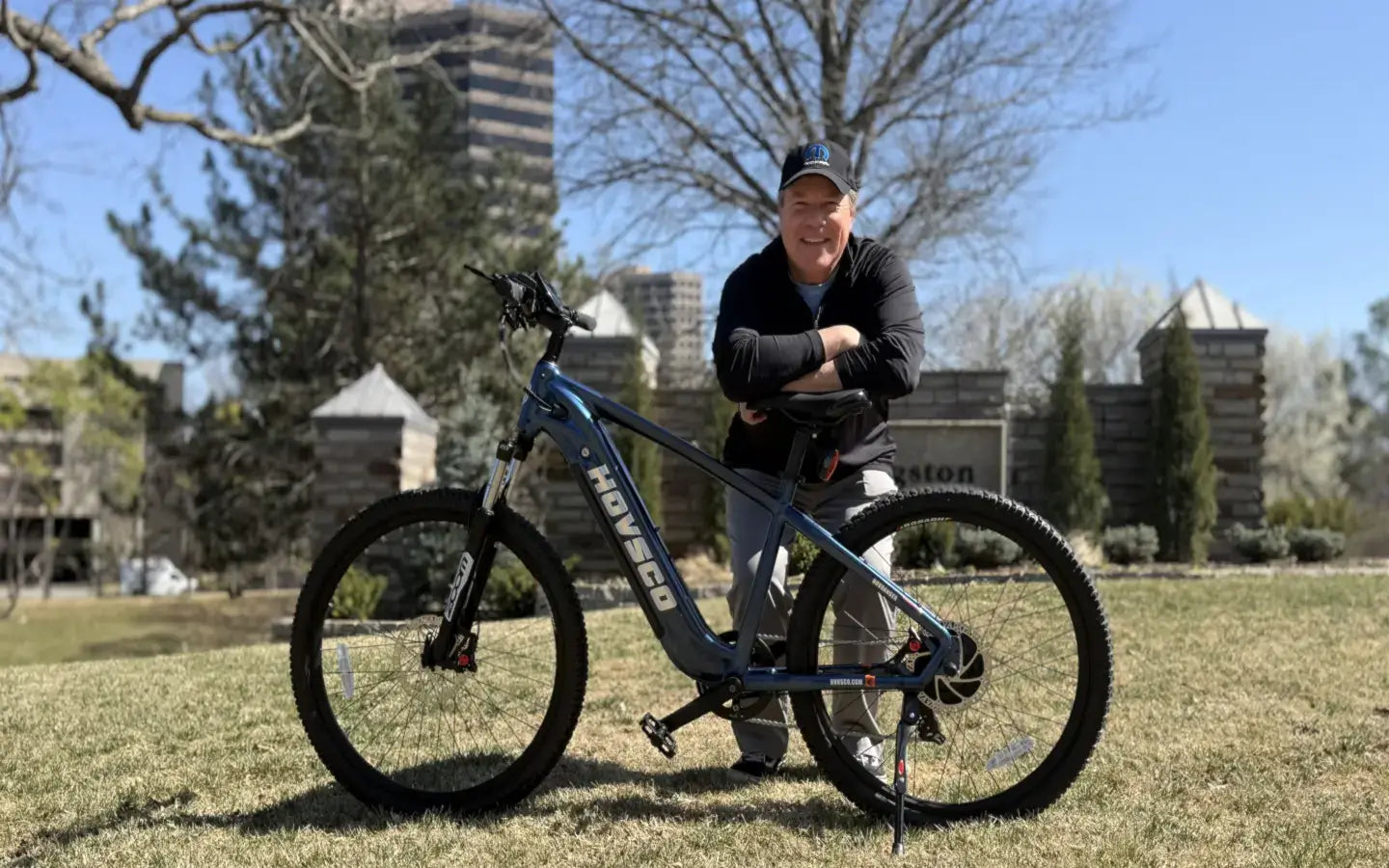
- by LiuJiazhu
How Do Lightweight Off-Road eBike Frames Enhance Trail Maneuverability?
- by LiuJiazhu
Lightweight off-road eBike frames enhance trail maneuverability by optimizing material selection, geometric design, and structural reinforcement. Advanced alloys like hydroformed aluminum or carbon fiber reduce weight while maintaining rigidity, enabling quicker acceleration, nimble handling, and reduced rider fatigue. Strategic tube shaping and suspension pivot placement improve weight distribution and responsiveness, allowing precise control on technical terrain. These design choices balance durability with agility, making steep climbs, sharp turns, and obstacle navigation more efficient. What Are Step-Thru Electric Mountain Bikes?
Reducing frame weight lowers rotational mass in wheels and drivetrain, improving acceleration and braking response. Lightweight frames enable faster directional changes while hydroformed tubing maintains torsional stiffness. Lower overall mass lets riders conserve energy during prolonged climbs or rapid descents.
Every 500g reduction in frame weight decreases required climbing torque by 7-9%, crucial for maintaining momentum on loose gradients. For example, a 2.1kg aluminum frame versus a 3kg steel counterpart allows 18% faster recovery from pedal bob during rock garden traversals.
Pro tip: Prioritize weight savings in rear triangle components—this area experiences 40% higher stress loads during cornering. Imagine steering a kayak versus a cargo barge; lighter frames respond like the kayak, instantly translating rider inputs to trail adjustments. However, don't sacrifice critical reinforcement zones—seat tube junctions require 2-3mm thicker walls to prevent fatigue cracks.
Modern eBike frames use aerospace-grade aluminum alloys (6061-T6, 7075) and high-modulus carbon fiber layered with impact-resistant resins. These materials achieve 30-50% weight reduction versus traditional steel while meeting ISO 4210 mountain bike safety standards.
| Material | Density (g/cm³) | Yield Strength (MPa) |
|---|---|---|
| Steel 4130 | 7.85 | 460 |
| Aluminum 7075 | 2.81 | 503 |
| Carbon Fiber T700 | 1.80 | 4900* |
*Longitudinal tensile strength. Material choice affects ride characteristics—aluminum provides vibration damping for rough trails, while carbon offers tunable flex patterns. Warning: Avoid ultra-lightweight magnesium alloys below 1500W motor systems; their lower melting point risks heat deformation during sustained climbs.
Head tube angles between 65-67° balance stability at speed with low-speed agility. Chainstay length under 440mm improves rear wheel traction during climbs while maintaining wheelbase stability.
Steeper 76° seat angles position riders forward for steep ascents, effectively transferring 85% of pedal force directly to rear hubs. Compare this to a mountain goat's stance—centered weight distribution allows quick pivots on narrow ledges. Short 430mm chainstays create a 12% tighter turning radius versus traditional 470mm designs, crucial for switchback navigation. However, slacker 64° head angles better suit downhill stability—it's about finding your terrain sweet spot.
Gusseted joints at head tube/down tube intersections increase impact resistance by 200%. Internal ribbing in seat stays reduces side flex during hard cornering while adding minimal weight.
Box-section down tubes with 40x80mm profiles resist twisting forces from 85Nm motors—a 30% improvement over round tubes. For example, HOVSCO's X-Cross Pro frame uses forged dropouts with 6mm thick flanges, eliminating axle slippage during 25% gradient descents. Pro tip: Check weld bead consistency—continuous TIG welds should show uniform "stacked dime" patterns, indicating proper heat treatment and fatigue resistance.
Torque-resistant designs use asymmetric chainstays (2-3mm wider drive-side) and motor mount reinforcements to counteract 150Nm+ rotational forces from mid-drive systems.
High-pivot suspension layouts redirect 70% of motor-induced frame flex upward rather than backward, maintaining pedaling efficiency. Imagine pushing a shopping cart—if one wheel binds, proper frame design redistributes force instead of twisting. Critical reinforcement zones include motor mounting plates (minimum 4mm thickness) and bottom bracket shells. Warning: Never exceed manufacturer's stated motor power limits—over-torquing can crack even reinforced frames within 200 ride hours.
Regular torque checks (every 15 rides) on pivot hardware prevent premature bearing wear. Composite-specific cleaners prevent resin degradation from mud acids.
| Component | Inspection Frequency | Critical Spec |
|---|---|---|
| Headset | 50 hours | 1.5-2Nm preload |
| Motor Mounts | 30 hours | 15-20Nm torque |
| Chainstay Pivots | 100 hours | 0.2mm play limit |
Anodized aluminum frames benefit from automotive-grade ceramic coatings—they reduce mud adhesion by 60% while preventing galvanic corrosion. Always use a torque wrench for carbon components—over-tightening seat clamps can delaminate fibers at just 8Nm.
Modern alloys and composites maintain durability through strategic reinforcement—look for frames with ISO 4210-5 certification validating 100,000+ cycle fatigue testing.
Can I convert a regular MTB frame to eBike use?Not recommended—non-reinforced frames lack motor torque resistance and battery mount integrity, risking catastrophic failure on trails.
How often should pivot bearings be serviced?Every 60-80 ride hours using waterproof grease—sandy conditions may require 30-hour intervals to prevent abrasive wear.
Share:
Are There Affordable Off-road Ebikes With Long-range Battery Life?
How To Maintain A Waterproof Off-Road Ebike Battery?